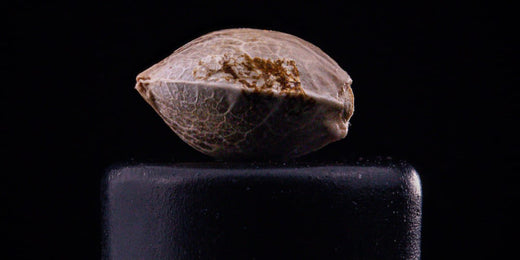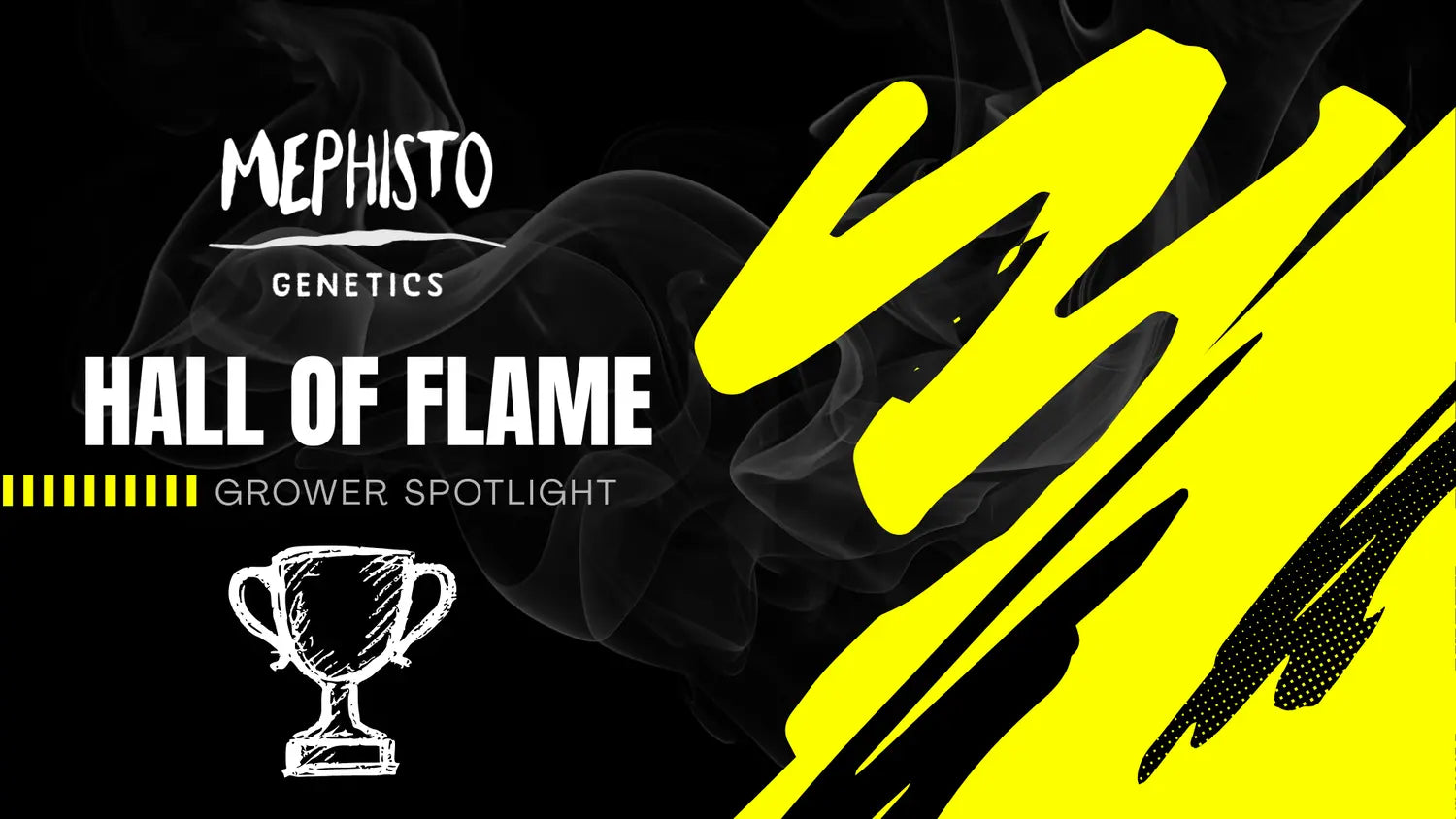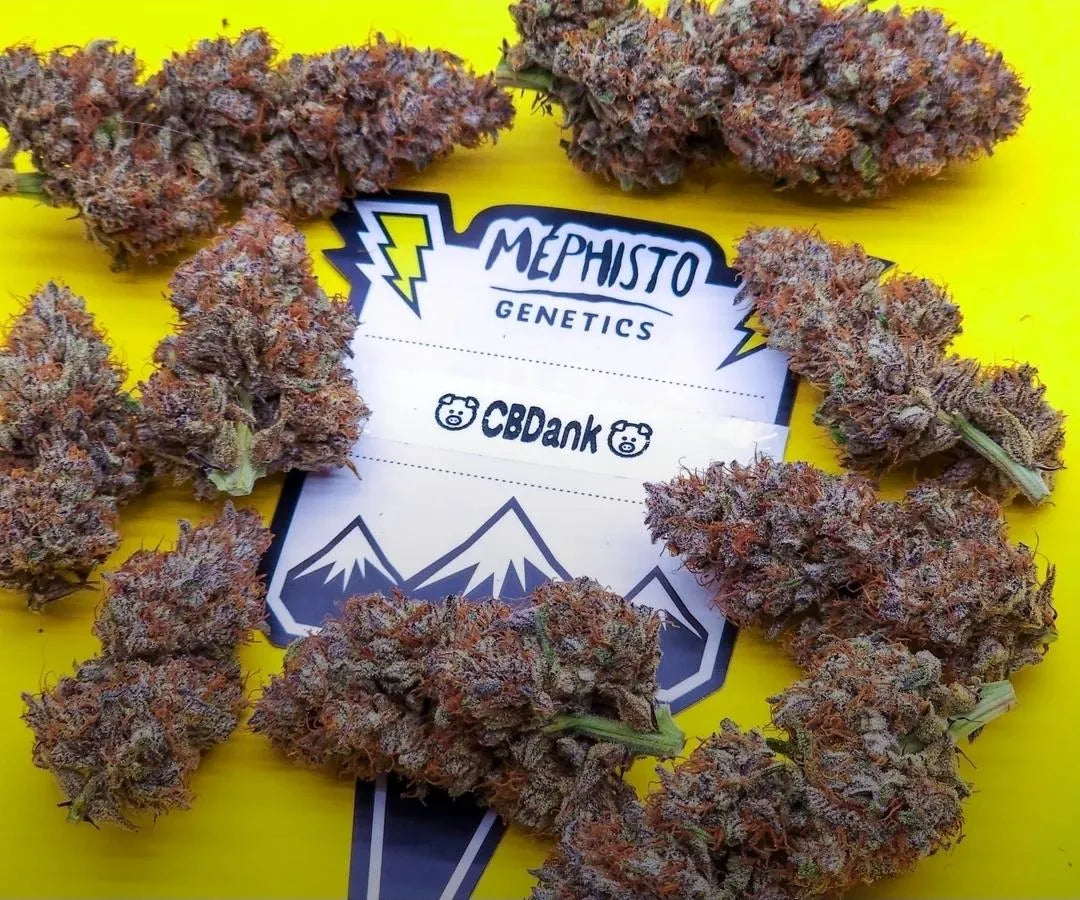Generally speaking, autoflowers are not big fans of stress. They are highly adept at letting you know when something is wrong and will sound off with a variety of issues if they are unhappy or unhealthy in any way. Stunting is undoubtedly one of the most frustrating of those stress responses. It's more or less the plant's way of throwing out the white flag and digging its heels in the dirt, refusing to develop any further. Depending on where you are at in your grow cycle, this can be devastating to your final yields. The best way to combat stunting is to be proactive by setting yourself up for success and staying dialled in. Here is a list of the best things you can do with your autoflowers to prevent them from stunting:

A stunted 3 Bears OG on the left, and a full size 3 Bears OG on right.
Consider the Strain
Genetics play a huge role in the life of your autoflower. You want to make sure that the strains you use in your grow will best fit your gardens’ parameters as well as your experience level as an autoflower grower. At mephistogenetics.com we provide an abundance of information to let you know each strain’s behavior and characteristics so that you can determine if those genetics will best suit you and your situation. Some of our selections fall on the easier and more forgiving side, while others may require a bit more TLC and are recommended for more seasoned autoflower gardeners (we’ve recently added a handy filter for you to help narrow down your selections in this regard). Preparing yourself with as much knowledge as you can regarding the strains you wish to grow and selecting those which you think will work best with your garden is the first and perhaps most important step you can take in the right direction on your autoflower growing journey.
Dial in your Environment
Outdoor growers, this one is a bit tougher for you. But understand that outside of ideal environmental parameters, some autoflowers are prone to stunting. This calls back to tip no. 1, you’ll want to make sure you choose varieties that are more resilient for your outdoor growing adventures. For all of my indoor homies on the other side of the wall, the next best thing you can do besides choosing the right genetics is to lock down those environmental parameters. You want temps in the 70-85F degree range (21-29c) during lights on and preferably within 65-75 degrees (18-24c) if and when the lights go off. You want your humidity in that 60-70% range for seedlings and early veg, 50-60% in late veg and early flower, 40-50% when those buds start to swell and on the lower end of that spectrum as the plants begin to senesce. If you want to dial in fully, maintain the proper vapor pressure deficit (VPD) for your stage in the grow cycle. We will have a future piece coming out on that soon.
Just as important as making sure your temp and humidity is within range is ensuring your garden has proper airflow, air exchange, and air filtration. All three are important. Airflow prevents hazardous microclimates from popping up in the nooks and crannies of your foliage. Air exchange pushes old air out and brings fresh air in, and air filtration scrubs the air clean of contaminants like mold spores. Utilize carbon filters, inline fans to push air through said filters, and independent fans to create plenty of air movement, exchange, and alteration in your grow.
Do Not Transplant
Look, you can transplant. It's possible, and even beneficial in some scenarios. That being said, transplanting is one of the primary culprits for early stunting in autoflowers. That’s because it’s incredibly easy to disturb the plants' root zone, no matter how careful you try not to. There are ways to help do it safely, but for the most part we recommend you try your best to sow seeds in their final pots.
Give Your Roots the Room They Need
Make sure the container to choose to grow your autoflowers in have sufficient space for roots to develop. Autoflowers do not need very much soil to grow large. Even pots as small as 1-2 gallons will still grow a plant to term without stunting it. That being said, larger pots will produce larger plants in most cases, especially those where all other parameters are met. If you want to see an autoflower stunt relatively quickly, try planting it in a shot glass or solo cup. Once the plant becomes root-bound it will fast trigger into flower and the rest is history. Some argue this trigger happens once the taproot hits the bottom of the container. Deeper vessels can help with this, however some plants will absolutely develop once the taproot is set.
Hydroponic systems like Deep Root Culture (DWC) are phenomenal examples of what one can achieve with an unbound root zone. Some of the highest-yielding autoflowers to date were grown in these unrestrictive setups.
Understand the Parameters of your Grow Medium
For soil growers, this means you want to have a complete understanding of what is in the mix you decide to use. You will have to make sure you aren't growing in soil that is “too hot” with nutrients or too dense with inadequate aeration. Light mix soils and drainage solutions like perlite help a ton in creating an oxygen-rich environment for the roots without suffocating them with early NPKs. It is very common for autoflowers to stunt or die when exposed to soils that contain an excess of nutrients.
Coco Coir and other hydroponics systems will also demand a greater understanding of the control parameters to ensure plants start off on the right foot. Oftentimes the fail points in these systems occur as a result of parameter fluctuations associated with user error.

The cola of a stunted 3 Bears OG

A full size 3 Bears OG cola.
Watering is Essential
In the early growth stages, it's very easy to accidentally overwater your plants when growing in soil (not so much coco or hydro). Water logging can lead to delayed growth, stunting, and even dying off. As your autoflowers develop into late veg and even early flower, you’ll be more likely to encounter issues with under-watering. This can lead to pH fluctuations, nutrient lockout, and ultimately stunting. Learn how to determine if your plants need water, and make sure you are monitoring their uptake so you can feed them what they want when they want it. Another option is to invest in automatic watering systems, which work great if you are not a fan of constant water handling/maintenance.
You’ll also want to make sure you are keeping pH in range, 6.0-7.0 for soil and 5.5-6.5 for hydroponics. Acidic or basic soil can stunt autoflowers by locking out nutrient uptake. Make sure that you are regularly checking water pH, even if you are using the same source consistently throughout your cycle. It's tedious but best practice.
Be Careful not to Over or Underfeed
Autoflowers in general are more sensitive to nutrients than their photoperiod counterparts. Typically speaking, it's recommended to cut nutrient chart recommended dosages by 60-75% for autos to prevent nutrient burning and lockout. This is going to vary by nutrient manufacturer, so make sure to reach out to your communities to see what peers are doing if you are unsure about the feeding schedule for whichever products you choose to use. Keep in mind that you can successfully grow autoflowers in just about any system as long as you are dialing back your feeding to accommodate the genetics you are using.
Be Mindful and Observe
Conversely, pay attention to the growth and development of your plant, adjusting for signs of deficiency or toxicity in your feeding regimen when you see them. This applies to every prior step, make sure you are practicing observation on your garden walks. Your plants will almost always let you know if they are upset and often you be able to diagnose the problem and mitigate it if it's caught in time. Your best ally in preventing stunting is to be mindful and intuit what your plants will want so that you can be there before they get hyperbolic and start throwing flags out.
Optimize Lighting
Lower on the list, but not low on importance. Your autoflowers need the right light schedule and intensity to thrive. In short, the metric that tracks usable light a plant can receive in a 24-hour window is called DLI or Daily Lighting Integral. This number will vary depending on where your plants are at in their cycle. with autoflowers, you can achieve adequate DLI with 24/0, 20/4, and even 16/8 light schedules depending on the intensity of the light and how far they are away from the canopy. Optimizing lighting is about dialing in the strength and intensity of your light with the distance it sits from the canopy and the amount of time it spends on. There is a lot of nuance here that we will go into in a future article, but know that too much light and too little light can both cause all kinds of issues, including stunting.
Avoid High Stress Training
Very similar to transplanting, you can high stress train (HST) successfully. This includes techniques like topping, supercropping, and manifolding. We don’t recommend you use these training methods if stunting is a concern for you or if you are not well trained on them. One wrong move and your autoflower will stunt. Sometimes no matter how careful you are, something like topping an autoflower at any stage can cause it to stunt. Again, we don’t recommend these training practices if stunting is a concern for you.
Cleanliness and IPM are Essential
Lastly, maintaining a clean and pest-free garden is imperative. Any kind of infestation at any stage can cause problems with your autoflowers. Make sure you clean up decaying leaves, wipe down wet spots and clear puddles or standing water, and always have cleaning tools on hand. Furthermore, get yourself a preventative regimen going to deter pests. Sprays, solutions, sticky traps, and beneficial insects and nematodes are all examples of integrated pest management (IPM) solutions you can employ in your garden. With pests, you have to stay on top of it by being highly proactive. You’ve got much bigger problems once you are actively fighting the spread of an active infestation.
Just like that, we’ve covered 11 ways you can be proactive in preventing your autoflowers from stunting. Many of these we have or plan to expand upon in our ongoing blog series, Be sure to check out more articles to help you on your autoflower growing journey over at mephistogenetics.com. Jimbo signing out!
related blogs.
Check out these other blog articles.










